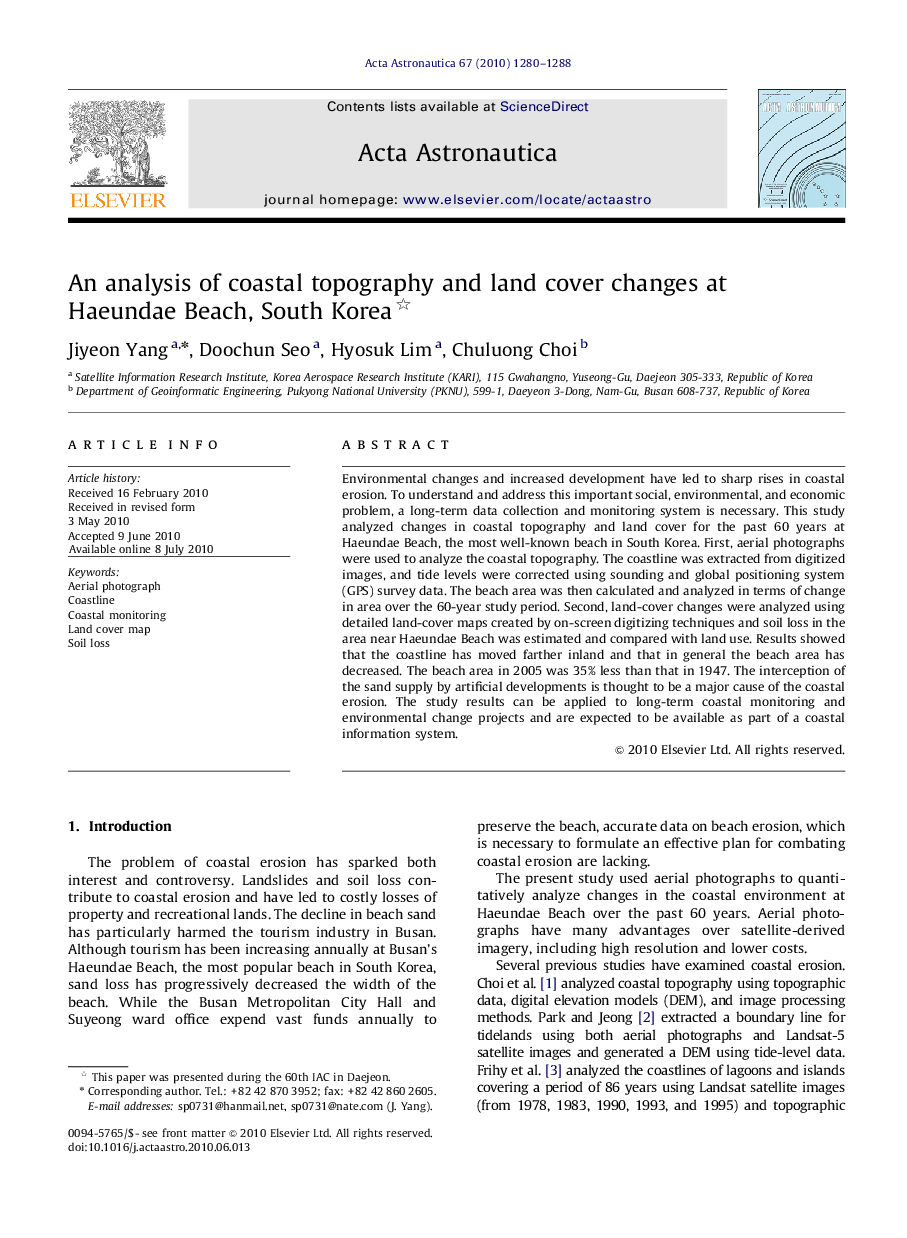| Article ID | Journal | Published Year | Pages | File Type |
|---|---|---|---|---|
| 1715778 | Acta Astronautica | 2010 | 9 Pages |
Environmental changes and increased development have led to sharp rises in coastal erosion. To understand and address this important social, environmental, and economic problem, a long-term data collection and monitoring system is necessary. This study analyzed changes in coastal topography and land cover for the past 60 years at Haeundae Beach, the most well-known beach in South Korea. First, aerial photographs were used to analyze the coastal topography. The coastline was extracted from digitized images, and tide levels were corrected using sounding and global positioning system (GPS) survey data. The beach area was then calculated and analyzed in terms of change in area over the 60-year study period. Second, land-cover changes were analyzed using detailed land-cover maps created by on-screen digitizing techniques and soil loss in the area near Haeundae Beach was estimated and compared with land use. Results showed that the coastline has moved farther inland and that in general the beach area has decreased. The beach area in 2005 was 35% less than that in 1947. The interception of the sand supply by artificial developments is thought to be a major cause of the coastal erosion. The study results can be applied to long-term coastal monitoring and environmental change projects and are expected to be available as part of a coastal information system.
